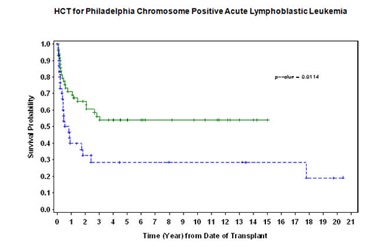Hematopoietic Cell Transplantation: From a Curative Concept to Cure
This article was published in December 2008 as part of the special ASH anniversary brochure, 50 Years in Hematology: Research That Revolutionized Patient Care.
In 1868, two investigators from Prussia and Italy were the first to report that bone marrow generates blood cells in mammals. This observation was the starting point of intense efforts to replace malfunctioning marrow through the transplantation of blood-forming (hematopoietic) cells in humans. However, it took an entire century to develop reliable techniques to identify suitable donors, design potent antibiotics, and establish essential supportive care methods to successfully perform clinical hematopoietic cell transplantation (HCT) procedures. This important accomplishment would not have been possible without decades of intense pre-clinical research in animals, especially to understand issues related to graft rejection and the prevention of graft-versus-host disease (GVHD), a serious reaction caused by the donor's immune cells attacking the recipient's vital organs. The research team at the Fred Hutchinson Cancer Research Center in Seattle, under the leadership of Dr. E. Donnall Thomas (Nobel Laureate in Medicine and Physiology, 1990), deserves the credit for the major contributions to our knowledge in the field of HCT - although countless investigators around the globe have also made many essential research observations.
In 1968, three patients in the United States and the Netherlands suffering from severe combined immunodeficiency syndromes, in which the ability of the body's immune system to fight infections is compromised, were successfully transplanted and cured by HCT. Since then, the number of HCT procedures has risen to 50,000-60,000 per year, and the cumulative number of patients treated worldwide has now reached 800,000. The majority of HCT recipients are patients with leukemia, lymphoma, myeloma, myelodysplasia, bone marrow failure conditions, severe red blood cell disorders such as sickle cell disease or thalassemia, and certain solid tumors.
 label-modal-with-text-click-to-enlarge
label-modal-with-text-click-to-enlarge
Hematopoietic cells can be obtained from suitably matched related or unrelated volunteer donors (allogeneic HCT) or from the patient's own tissues (autologous HCT). Sources of hematopoietic cells include the bone marrow, blood, or umbilical cord blood. International unrelated volunteer donor banks containing information on approximately 12 million volunteers are interconnected by worldwide computer systems. Approximately 3,500 HCT procedures from unrelated donors are now performed annually, and almost 40 percent of such transplants involve a donor who is from a different country from the recipient. In parallel, umbilical cord blood banks are rapidly growing in size and usage. To date, some 10,000 HCT procedures with umbilical cord blood grafts have been performed.
The choices of which type of HCT (allogeneic or autologous) and the source of the graft (bone marrow, blood, or cord blood) depend mainly on the patient's underlying disease and whether it is in remission. Before transplant, the patient is treated with high-dose chemotherapy, with or without radiation therapy, to eradicate the cancerous cells (prior to both autologous and allogeneic HCT), and to suppress the patient's immune system to prevent it from attacking the donor hematopoietic cells (prior to allogeneic HCT). More recently, it has been established that less intensive pre-transplant treatment also allows successful transplantation, but with less severe side effects. Such "reduced intensity" transplants prevent later relapses by maintaining the body's ability to launch an immune attack by the new marrow against the cancer.
This "graft-versus-malignancy effect" is a critical element for cure through allogeneic HCT. Reduced-intensity regimens have also made it possible to extend HCT to older patients (up to 75 years) and younger patients with health problems that make them ineligible for high-intensity regimens.
Significant post-transplant problems can result from toxic effects related to the preparatory treatments, GVHD, infections, and relapse of the underlying disease. Continued research is leading to further improvements and better survival results. The long-term outcome of HCT procedures depends on whether or not the patient is in remission. While 50-80 percent of leukemia patients can be cured by allogeneic HCT if performed during first remission, the expectation for success is markedly reduced for those whose HCT is carried out in more advanced stages of their disease. Likewise, the long-term results of autologous HCT are strongly influenced by the amount of cancer in the patient's body at the time of transplantation, with relapse being the leading cause for treatment failure.
Social studies conducted over an extended period of time indicate that the quality of life in the years after a patient receives HCT usually ranges from good to excellent, and, ultimately, the majority of patients are successfully reintegrated into their personal and professional lives.
